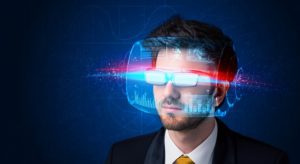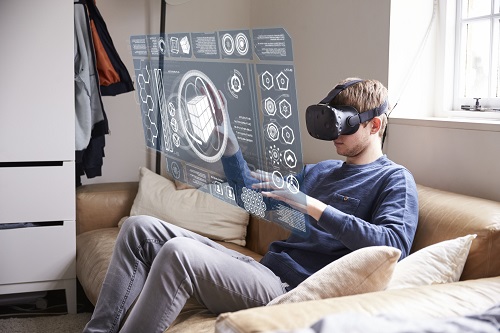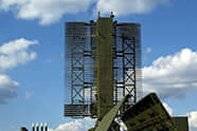Wearable Electronics Application Development – Challenges and Risks
Wearable Electronics are smart gadgets and/or accessories with specific functionalities and applications. Wearable Electronics devices focus on the efficient and brilliant use of internet, various sensors, trackers and latest communication technologies to design intelligent devices that enable or facilitate people in their daily professional and personal routine/activity by improving the productivity, efficiency and overall quality of their output. Wearable Electronics Application Development is an evolving field that focuses on creating software and systems for wearable devices such as smartwatches, fitness trackers, and smart glasses. With wearable electronics app development, smart gadgets can be better integrated into people’s daily lives.
These applications harness the capabilities of sensors, connectivity, and user interfaces embedded in wearables to provide a range of functionalities from health monitoring to augmented reality. Developers must consider unique challenges such as limited screen size, battery life, and the need for seamless integration with other devices and platforms. Wearable Electronics App Development (Wearable Electronics Application Development) are bringing these positive trends in the fields of Medical, Health/Fitness, Industrial, Consumer and entertainment sectors. Wearable electronics devices include but are not limited to Head Mounted Computers, AR/VR Glasses, Smart Watches, Fitness Trackers, and Smart Clothing.  The earliest examples of wearable electronics technology and related Wearable Electronics Application Development are the spectacles and pocket watches that were invented centuries ago.
The earliest examples of wearable electronics technology and related Wearable Electronics Application Development are the spectacles and pocket watches that were invented centuries ago.
With the advancement in technology, Internet of Things (IoT) and Ubiquitous Computing have combined to provide advanced high-performance gadgets that are capable of multitasking and communicate in real-time. Popular wearable devices that have made it to the market over the past decade include Google Glass, Apple watch, Samsung Galaxy Gear and Fitbit Health Bands. During this period, a larger interest and need for Wearable Computers, AR/VR Glasses have been fostering realizing tremendous opportunities in Industrial and Medical Applications. With the need for intelligent solutions on-the-go, Wearable electronics technology and related Wearable Electronics App Development will observe massive developments in the near future, giving it an edge over other technologies among technology enthusiasts and product developers.
Wearable Electronics App Development
- Industrial: Wearable Electronics devices and Wearable Electronics App Development are set to play a major role in an industrial environment, Head mounted computers and Intelligent Headsets that work as an accessory to Smartphone enables technicians and floor managers with greater efficiency, by providing hands-free operation along with instructions, maintenance schedules and inventory information in real-time. Wearables and Wearable Electronics App Development are thus becoming a key enablers in Industrial Floors, large Warehouses, Repair & Maintenance sectors saving time and millions of dollars for the Manufacturers. Such wearable devices play vital role in real-time information capture and gateway of information to the operator in the Industrial Internet-of-Things.
 Medical, Health and Fitness: Devices like Health Bands that come in the form of wristbands are one of the most sought-after smart gadgets for athletes and fitness conscious people, which help them track their heart rate, calories burnt during a work-out session, distance covered, etc. These devices are paired with user’s smartphone over Bluetooth to provide various health, fitness related updates to the user. Smart jewelries are another concept which is gaining popularity now a days. Smart bandages are some of the also being used in hospitals to take better care of patients. Wearable Smart Glasses with the appropriate Wearable Electronics App Development could become a quick enabler in the Medical industry, by assisting the practitioner to quickly access the complete history of a patient, previous medications, etc. and assisting during the surgery by enabling access to instruction videos and video calls to experts for real-time assistance.
Medical, Health and Fitness: Devices like Health Bands that come in the form of wristbands are one of the most sought-after smart gadgets for athletes and fitness conscious people, which help them track their heart rate, calories burnt during a work-out session, distance covered, etc. These devices are paired with user’s smartphone over Bluetooth to provide various health, fitness related updates to the user. Smart jewelries are another concept which is gaining popularity now a days. Smart bandages are some of the also being used in hospitals to take better care of patients. Wearable Smart Glasses with the appropriate Wearable Electronics App Development could become a quick enabler in the Medical industry, by assisting the practitioner to quickly access the complete history of a patient, previous medications, etc. and assisting during the surgery by enabling access to instruction videos and video calls to experts for real-time assistance.- Infotainment: Wearable Electronics is extensively used in gaming and entertainment industry. Wearable Electronics App Development includes interactive augmented reality (AR) and virtual reality (VR) headsets, smart joysticks, smart goggles, etc.
Key Components
MCUs and sensors [IMUs, Accelerometer, Gyroscope, Magnetometer, Barometric pressure, Ambient temperature, Heart rate monitor, Oximetry, Skin conductance, temperature, GPS] form the basic hardware of a typical wearable electronics device. Depending on the functionalities and features to be realised on the device, developers may include displays, pedometers, keypads, etc. Developers accustomed to designing applications for desktop and mobile OS environments will have to relearn UI and UX.
Wearable Electronics tend to be much smaller, with smaller displays and fewer controls. Hence, Wearable Electronics Application Development need to keep specific UI and UX principles to keep in mind when developing apps like making it discernable “at a glance”, ensuring one-touch quick responses or voice commands, offer users only that information and interactions they absolutely need and making it minimalist.
Key Design considerations:
- Small Form Factor Hardware
- Battery and Power Management
- Thermal Management
- Interfaces and Connectivity
- Video Streaming
- Multi-sensor integration
- Size, Weight and Ergonomics
- Library/Algorithm Integration
- Wearable Electronics Application Development
- EMI/EMC Regulations
Wearable Electronics Designs and Wearable Electronics Application Development must be user-centric, aesthetically pleasing, complying with environmental regulations and easily adoptable in real life scenario where in it can solve crucial problems.
Challenges and Risks
- Design: Packaging massive set of functionalities and features into these advanced devices require a lot of design thinking. User’s convenience and comfort is critical and this demands for high performance/features, longer operating time while ensuring low weight, compact size, thermally safe. It can be challenging for product engineers to design a device that is universally compatible and suitable for different body types. There is lack of a common standard.
- Privacy & Security: Securing the personal data of the user is one key aspect. These devices collect real-time data on health, user’s behavioral patterns, his preferences, etc. which needs to be secured against any kind of cyber threats.
- Health Risks: Wearable electronics technology poses health risks and hazards to certain extend due to constant radiation exposure. It is important to keep SAR (Specific Absorption Rate) in these devices to the lowest. At the same time, it is also essential that wearable electronic devices pass all mandatory safety, environmental standards.
Conclusion
Wearable Electronics Designs and Wearable Electronics Application Development company have invested considerable amount of time and effort in the R&D of futuristic wearable devices to understand the functional, technological and business needs of the modern-day devices. The ever-evolving embedded technologies have been successful in developing Small form factor, miniature, extended battery life, rugged and ergonomic, that are a key aspect of wearable designs. Wearable Electronics App Development along with IoT and AI is set to transform the current environment. The potential physical harm can be prevented through definition of standard, precautionary design and though testing measures.




